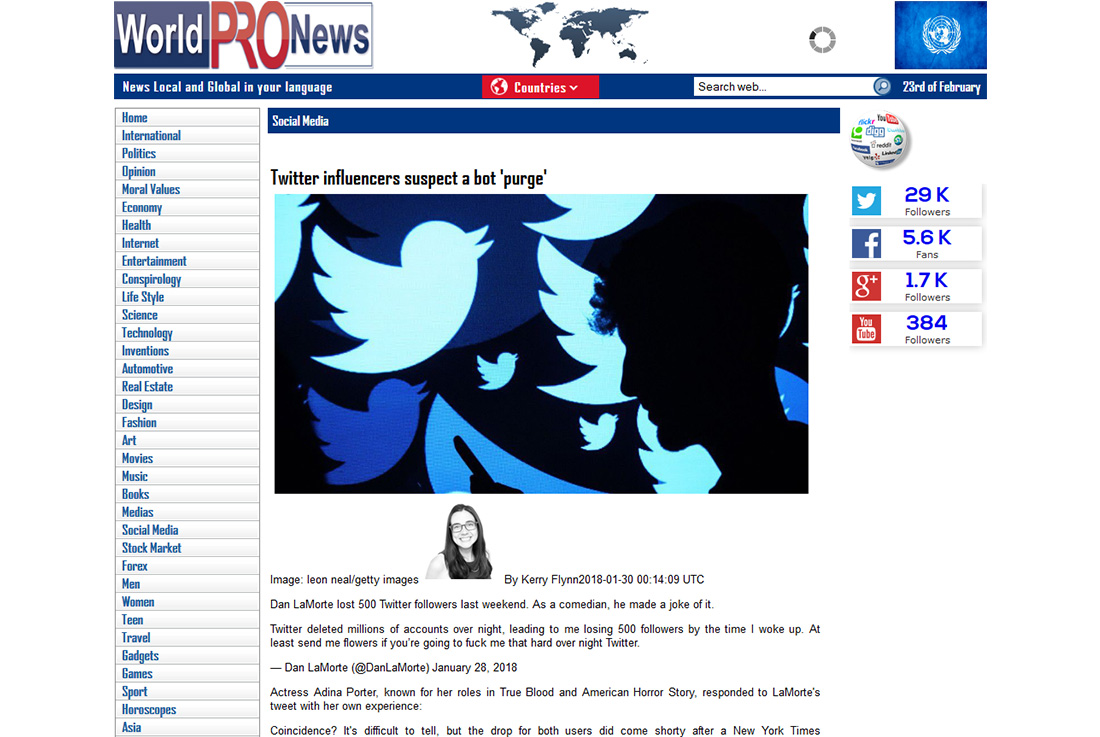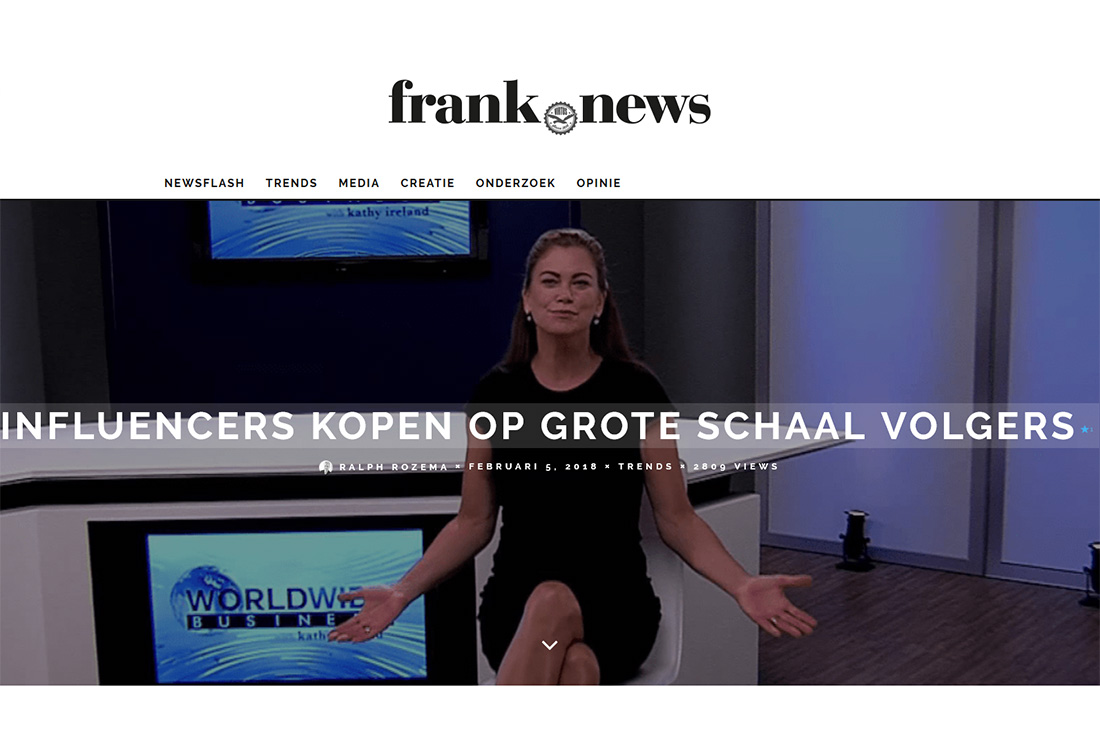Twitter influencers suspect a bot ‘purge’ – WorldProNews
Dan LaMorte lost 500 Twitter followers last weekend. As a comedian, he made a joke of it.
Twitter deleted millions of accounts over night, leading to me losing 500 followers by the time I woke up. At least send me flowers if you’re going to fuck me that hard over night Twitter.
— Dan LaMorte (@DanLaMorte) January 28, 2018
Actress Adina Porter, known for her roles in True Blood and American Horror Story, responded to LaMorte’s tweet with her own experience:
Coincidence? It’s difficult to tell, but the drop for both users did come shorty after a New York Times investigation named influential figures who had purchased fake Twitter followers, and exposed a service called Devumi which provides them.
Twitter responded to the New York Times story prior to its publication, saying it’s aware of the problem and has a team that addresses spam and bot accounts.
When contacted by Mashable, Twitter did not have an update on whether or not it had boosted efforts to take down bots, other than a tweet specifically calling out Devumi.
The tactics used by Devumi on our platform and others as described by today’s NYT article violate our policies and are unnacceptable to us. We are working to stop them and any companies like them.
— Twitter Comms (@TwitterComms) January 27, 2018
But cases over the weekend seem to point toward a so-called “purge” of bots. For those influencers, it’s not necessarily a bad thing. A decrease in followers can be upsetting, but it shows authenticity and transparency rather than conflating high numbers with someone’s genuine influence.
“Brands want to invest in social media without damage,” said Bijoy Patel, founder of CompuBrain, a service for analyzing influence on Facebook and Twitter. “They want to know there’s real engagement.”
When asked if he had lost followers like that before, the comedian LaMorte told Mashable, “I mean on the Instagram purge of 2014 I lost a lot. I remember a few occasions losing batches of Twitter followers. Aesthetically it looks frightening, but overall I like getting rid of the bad apples. I’m interested to see if it keeps going down.”
LaMorte was referencing a December 2014 event when Facebook’s Instagram deleted inactive and spam accounts, causing influential users like Justin Bieber to lose 3.5 million followers.
Perhaps Twitter did the same, quietly, over the weekend.
Angelo Ray Gomez, a political figure in Nevada who was the youngest person to run for mayor in the state, saw an unexpected drop over the weekend, as well.
What the heck? In a matter of minutes, I lost over 10,000 followers. This has to be a glitch?
— Angelo Ray Gomez (@AngeloRayGomez) January 27, 2018
Gomez now has 43,500 followers, but he’s had far more. He showed Mashable screenshots of his account with 51,900 followers one minute and 47,300 followers the next.
The decrease in followers over the weekend doesn’t immediately imply that Gomez — or any user who was affected — had purchased fake followers. Martha Lane Fox, a Twitter board member named in the NYT piece, blamed a rogue employee for buying her followers.
“My followers on Twitter skyrocketed when I got a lot of media attention during the presidential election and when I ran for mayor at 19 years old,” Gomez said.
“I didn’t know who was real or not but many of my followers have contributed to my past mayoral campaign and when I raised funds to go to the inauguration. This gave me confidence I had genuine followers,” he continued.
But Twitter is a land of bots. That’s not news. Pop star Katy Perry has bots. President Donald Trump has bots. Sean Hannity has bots, as a NYT reporter behind the investigation tweeted:
I probably have bots. But there’s nothing I — or really any of these Twitter users — can do about it. It’s up to Twitter to detect them and take down the accounts. In some cases, the company has been doing that, especially with regards to bots linked to Russia.
Twitter cofounder and CEO Jack Dorsey has addressed the network’s bot problem in the past but has called it minimal.
When asked by an analyst on the company’s earnings call in April 2017, Dorsey cited a statistic, first released in 2014, that 5 percent of Twitter accounts are spam related. Studies have said otherwise. For example, researchers at the University of Southern California and the University of Indiana reported that as many as 15 percent of Twitter accounts may be run by bots. Though, not every bot is harmful. Mashable’s Mark Kaufman’s favorite Twitter account is a bot.
But Dorsey said in that earnings call that the company does have the means to shut these bots down. It’s just a matter of whether or not they want to. And so, we wait.
WATCH: High school player sinks riduclous full-court shot on the buzzer



